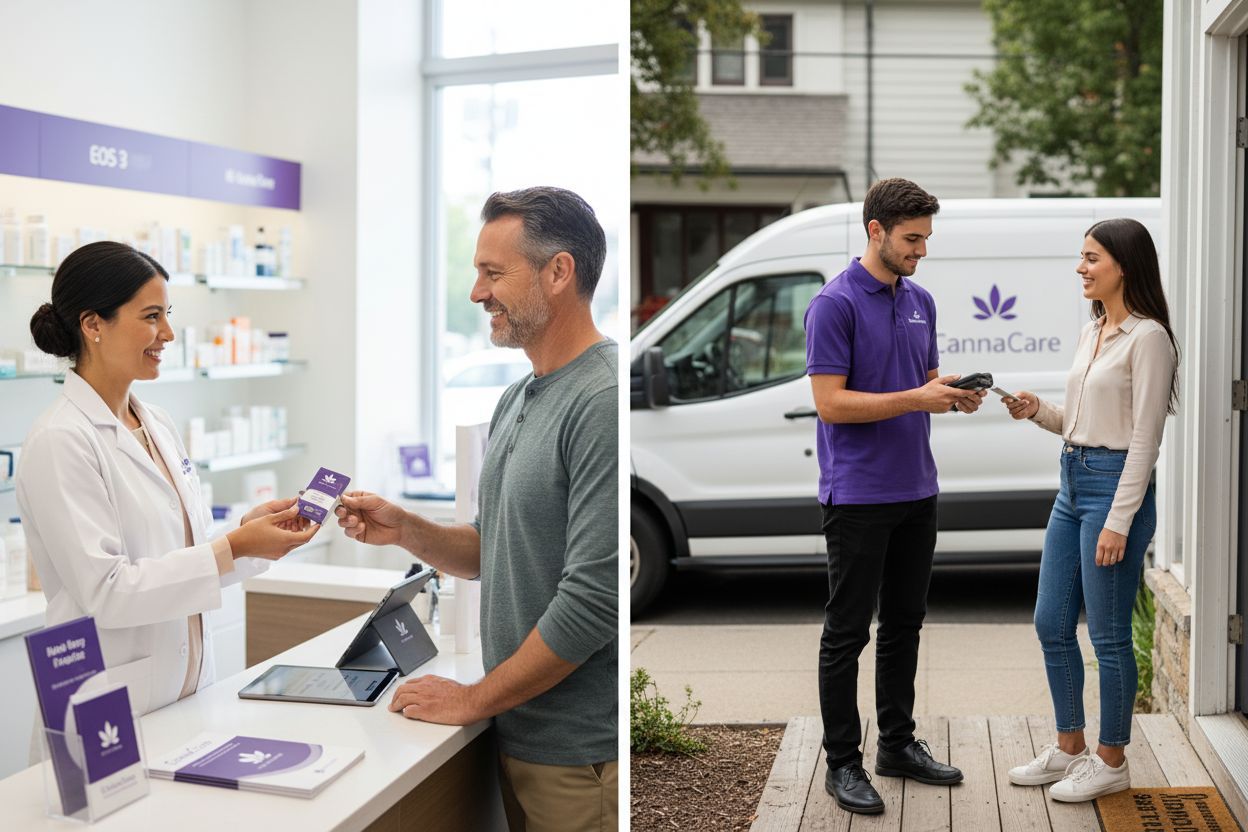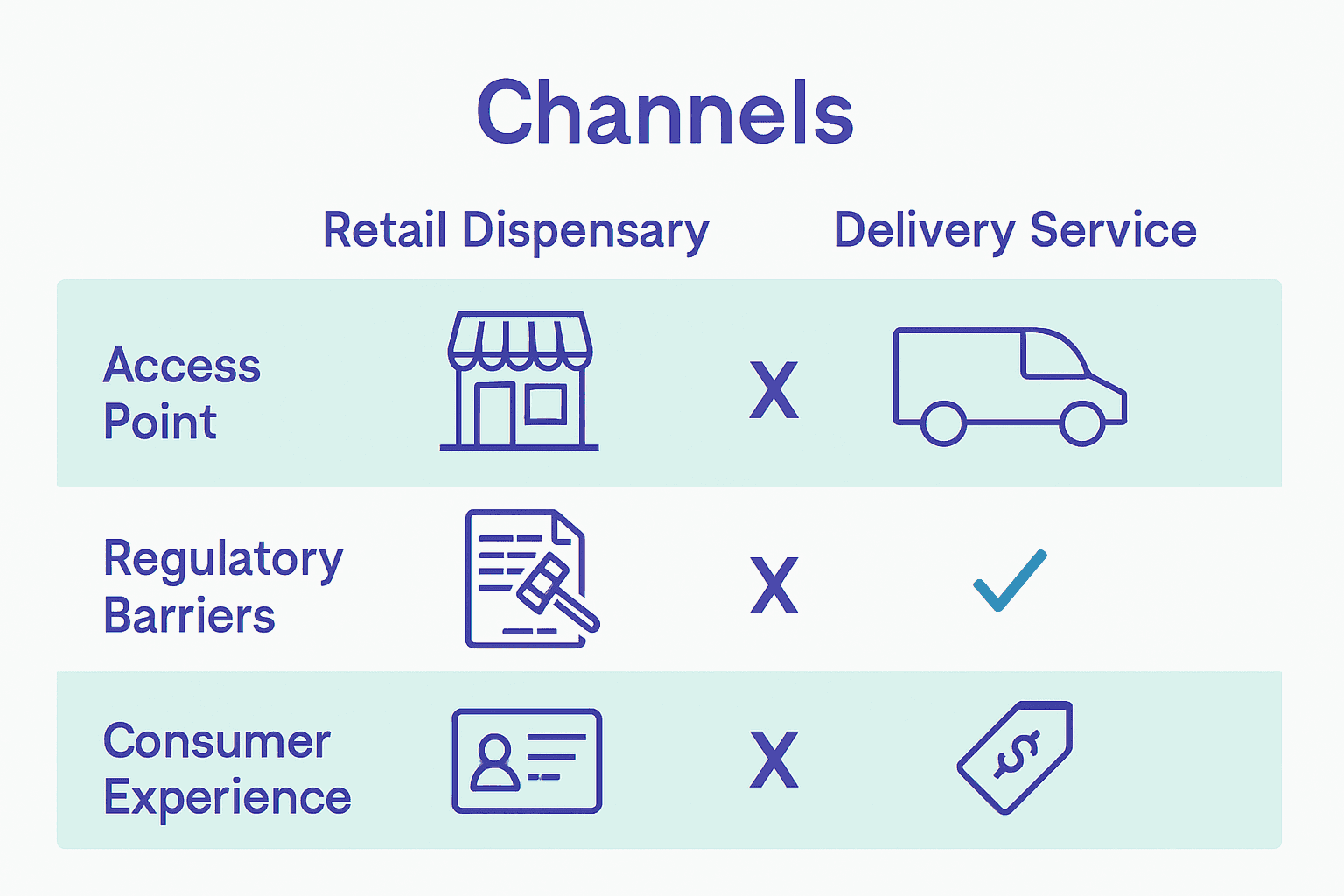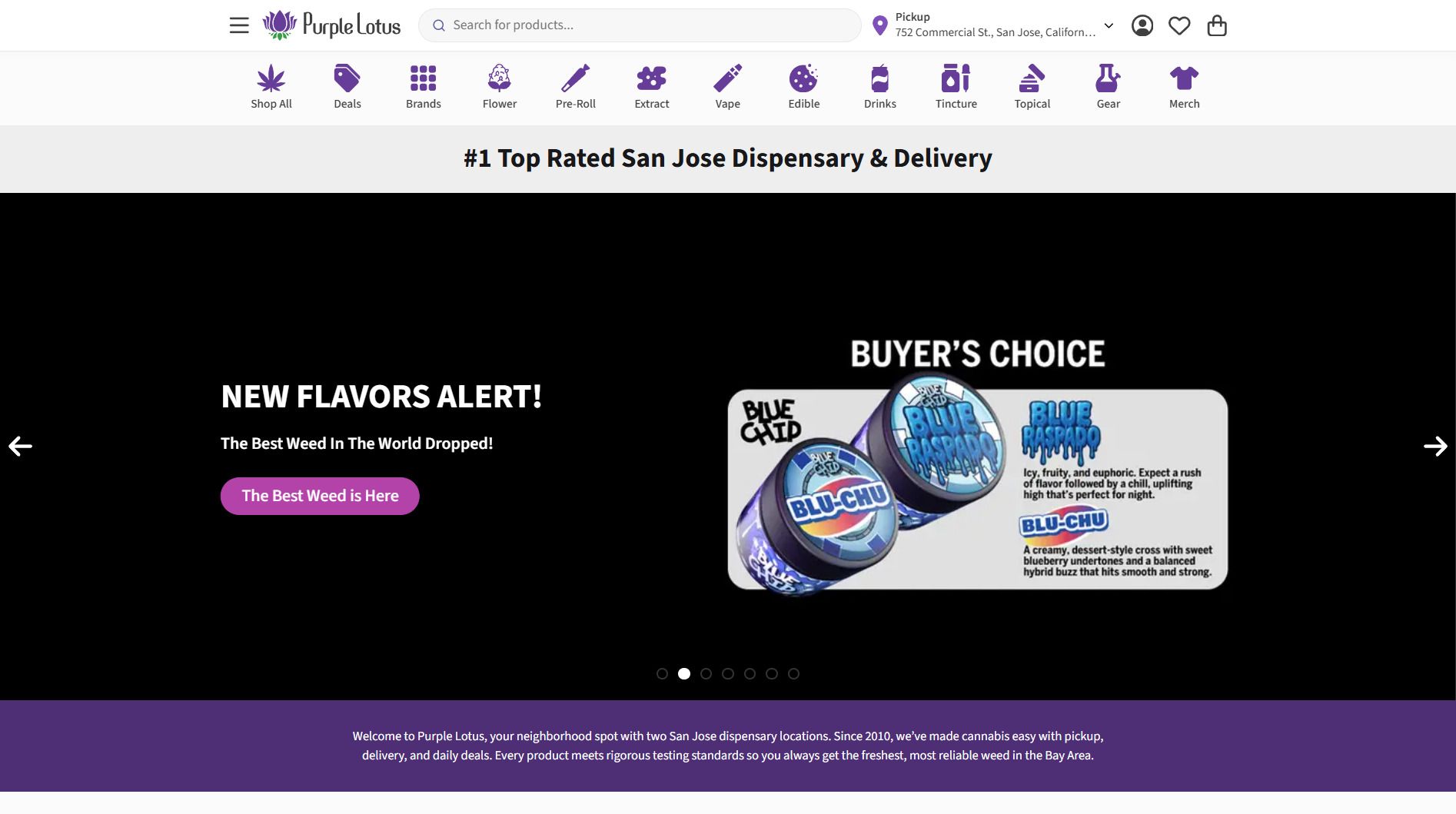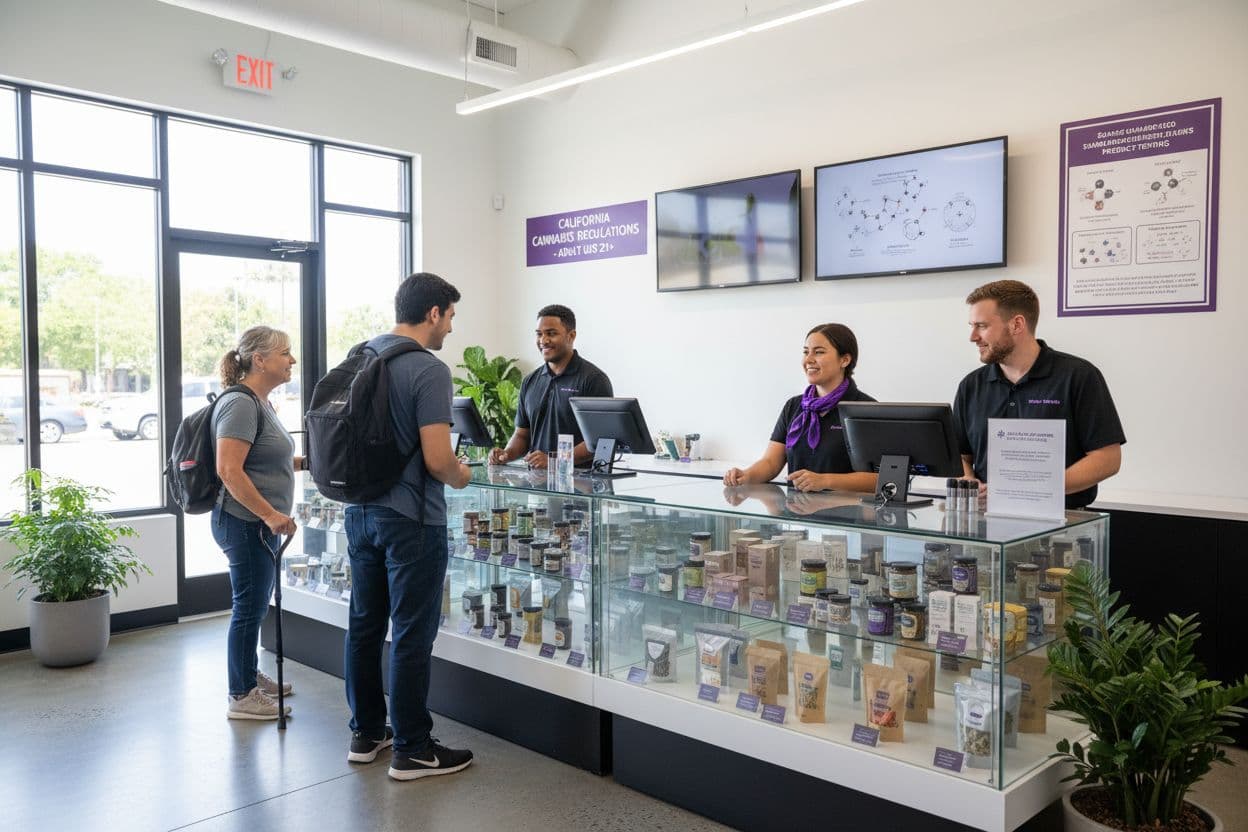What Is Cannabis Accessibility? Complete Guide for 2025
Did you know that roughly 40 states in the U.S. now allow medical cannabis while just 24 permit recreational use? This fast-changing environment leaves many people with different levels of access based simply on where they live. From strict regulations to evolving delivery services and medical requirements, how you obtain cannabis can look very different from one place to another. Understanding these challenges can help you make better decisions and avoid legal or safety pitfalls.
Key Takeaways
Cannabis Accessibility Varies Legally
Accessibility is influenced by state regulations, with 40 states allowing medical and 24 recreational usage, highlighting regional legal disparities.
Challenges in Retail and Delivery
Retailing faces significant federal hurdles like banking access and high taxes, while delivery services deal with strict regulations and eligibility constraints.
Federal Scheduling Impacts Access
Cannabis remains a Schedule I substance, limiting research capabilities and overall understanding of its medical applications.
Importance of Consumer Education
Patients and consumers must seek accurate information and understand regulations to navigate cannabis use safely and effectively.
Table of Contents
- Defining Cannabis Accessibility And Key Concepts
- Types Of Cannabis Accessibility: Retail And Delivery
- Legal And Medical Requirements In San Jose
- Barriers And Solutions To Cannabis Access
- Practical Implications For Consumers And Providers
Defining Cannabis Accessibility and Key Concepts
Cannabis accessibility represents a complex legal and regulatory landscape determining how individuals can obtain, use, and interact with cannabis products across medical and recreational contexts. According to research from the National Center for Biotechnology Information, accessibility involves navigating intricate regulatory barriers that significantly impact research, medical treatment, and consumer experiences.
At its core, cannabis accessibility depends on multiple interconnected factors. As current data indicates, accessibility varies dramatically across U.S. jurisdictions - with approximately 40 states permitting medical cannabis and 24 states allowing recreational use. These variations create a patchwork of legal frameworks where geographic location becomes a critical determinant of cannabis availability. Understanding the different types of weed products can help consumers navigate these complex legal landscapes more effectively.
Key accessibility considerations include:
- Legal status (medical vs. recreational)
- State and federal regulatory environments
- Supply chain and distribution mechanisms
- Product diversity and availability
- Consumer age and identification requirements
Federally, cannabis remains a Schedule I controlled substance, which creates significant challenges for researchers, medical professionals, and consumers seeking consistent, safe access. This federal classification means accessibility is not just a legal issue, but a complex interplay of regulatory, scientific, and social factors that continue to evolve rapidly.
Types of Cannabis Accessibility: Retail and Delivery
Cannabis accessibility manifests through two primary channels: retail dispensary purchases and home delivery services. These methods represent critical pathways for consumers to obtain cannabis products, each with unique regulatory challenges and operational dynamics. 10 reasons why modern dispensaries have taken cannabis delivery to the next level highlight the evolving landscape of cannabis distribution.
Retail accessibility involves physical dispensary transactions, which face significant federal regulatory obstacles. According to recent research, challenges include restricted banking access and substantial tax burdens under Section 280E. These financial constraints directly impact dispensary operations and product pricing. The potential DEA rescheduling of cannabis to Schedule III could substantially improve financial accessibility and reduce tax-related burdens for retail establishments.
Delivery services represent an increasingly sophisticated alternative to traditional retail purchases. However, market dynamics are complex. Research from Axios indicates that in markets like Denver, marijuana delivery sales have experienced declines due to:
- Stringent regulatory requirements
- Limited delivery eligibility
- Robust physical dispensary infrastructure
- Reduced consumer discretionary spending
Modern cannabis accessibility requires navigating these intricate legal and operational landscapes. Consumers must understand local regulations, product availability, and the unique characteristics of both retail and delivery purchasing options to make informed decisions about their cannabis acquisition strategies.

Here’s a comparison of the two primary channels for cannabis accessibility:

Legal and Medical Requirements in San Jose
Cannabis accessibility in San Jose involves navigating a complex landscape of local and state regulations that govern both medical and adult-use cannabis consumption. According to the San Jose Police Department’s Division of Cannabis Regulation, all cannabis businesses must be meticulously registered and comply with specific local zoning, operational, and municipal tax requirements. Check our upcoming events to stay informed about local cannabis regulations and community updates.
Medical cannabis access requires additional documentation and verification. Patients seeking a medical marijuana identification card must obtain a physician’s recommendation and provide proof of San Jose residency. The California Medical Marijuana Identification Card (MMIC) program facilitates this process, enabling qualified patients to legally purchase cannabis from licensed dispensaries after paying a standard application fee.
Key legal requirements for cannabis consumers in San Jose include:
- Minimum age of 21 for recreational use
- Valid government-issued identification
- Purchase limits per transaction
- Consumption restrictions in public spaces
- Compliance with local possession quantity regulations
The city’s regulatory framework ensures that both medical and recreational cannabis consumers can access products safely and legally, while maintaining strict oversight to protect public health and prevent unauthorized distribution. Understanding these nuanced requirements is essential for responsible cannabis consumption in San Jose.
Barriers and Solutions to Cannabis Access
Cannabis accessibility is fundamentally constrained by complex regulatory, financial, and informational barriers that prevent both consumers and researchers from fully engaging with cannabis products and studies. Research from the National Center for Biotechnology Information highlights multiple systemic challenges that impede comprehensive cannabis understanding and access. The Biden Administration’s thoughts on federal legalization provide critical context for understanding these evolving challenges.
Key barriers include federal scheduling, which classifies cannabis as a Schedule I substance, severely limiting research opportunities and creating significant regulatory hurdles. These restrictions directly impact scientific investigation, medical treatment protocols, and consumer access. According to a 2025 healthcare study, high costs of legal medical cannabis and limited unbiased information drive patients toward potentially unsafe, unregulated products.
Potential solutions to improve cannabis accessibility encompass:
- Rescheduling cannabis to reduce federal restrictions
- Increasing research funding and removing bureaucratic barriers
- Developing comprehensive, unbiased patient education programs
- Implementing cost-reduction strategies for legal cannabis
- Creating standardized testing and quality control mechanisms
Addressing these barriers requires a multifaceted approach involving policymakers, researchers, healthcare professionals, and cannabis industry stakeholders. By systematically dismantling regulatory obstacles and creating transparent, scientifically-informed pathways, we can develop a more accessible, safe, and effective cannabis ecosystem that serves both medical patients and recreational consumers.
Practical Implications for Consumers and Providers
Cannabis accessibility creates significant challenges for both consumers and healthcare providers, primarily stemming from limited research and complex regulatory environments. According to research from the National Center for Biotechnology Information, providers often lack robust evidence to guide clinical recommendations, which directly impacts patient care and treatment strategies. The History of Cannabis and Racism provides critical context for understanding the broader systemic challenges in cannabis regulation.
Consumers face substantial uncertainty when navigating cannabis products and treatments. Without comprehensive clinical guidelines, patients must rely on fragmented information and local regulations to make informed decisions about cannabis use. This knowledge gap creates potential risks, as individuals may self-medicate without professional medical oversight or understanding of potential interactions with existing treatments.
Key practical considerations for consumers and providers include:
- Importance of transparent communication about cannabis use
- Documenting personal cannabis consumption and effects
- Seeking multiple professional medical perspectives
- Understanding individual health risks and potential benefits
- Staying informed about evolving legal and medical guidelines
Navigating cannabis accessibility requires a collaborative approach between consumers, healthcare providers, and regulatory bodies. By prioritizing patient education, supporting comprehensive research, and developing clear, evidence-based guidelines, the cannabis ecosystem can become more transparent, safe, and responsive to individual medical needs.
Experience True Cannabis Accessibility in San Jose Now
Navigating cannabis accessibility can feel overwhelming with all the legal barriers, medical requirements, and varying local rules discussed in the article. If you want safe, fast, and legal access to top-quality cannabis products in San Jose, you do not have to face these challenges alone. At Purple Lotus we address every pain point, bridging the gap between confusing regulations and real solutions. Whether you are a medical patient or a recreational user seeking trustworthy information and reliable services, our online platform eliminates uncertainty by offering a transparent, user-focused experience.

Ready to simplify your cannabis journey and get premium products directly from a reputable dispensary? Visit our Purple Lotus website to discover easy online ordering for pickup or delivery, verified product quality and ongoing educational updates. Explore our educational blog for more guidance, stay informed through our local events, and take control of your cannabis experience today. Do not wait—get safe access and expert support right now.
Frequently Asked Questions
What is cannabis accessibility?
Cannabis accessibility refers to the legal and regulatory frameworks that determine how individuals can obtain, use, and interact with cannabis products, whether for medical or recreational use.
What are the primary channels for cannabis accessibility?
The main channels for cannabis accessibility are retail dispensary purchases and home delivery services. Each channel has its own regulatory challenges and consumer experiences.
What are key barriers to cannabis accessibility?
Key barriers include cannabis being classified as a Schedule I controlled substance at the federal level, which limits research and creates regulatory hurdles. Additionally, high costs and limited unbiased information also impede access.
What should consumers consider when navigating cannabis products?
Consumers should prioritize transparent communication about cannabis use, seek multiple medical opinions, document their consumption effects, and stay informed about evolving legal and medical guidelines.
